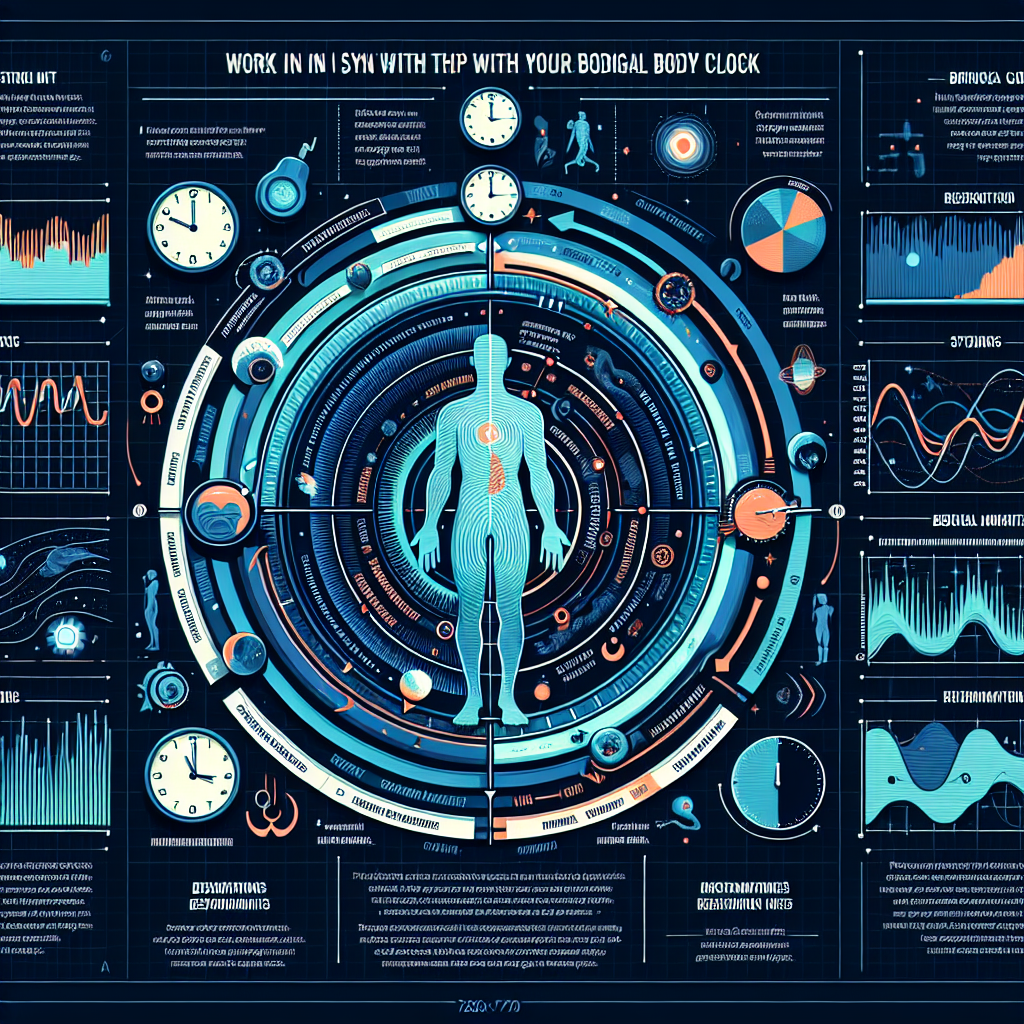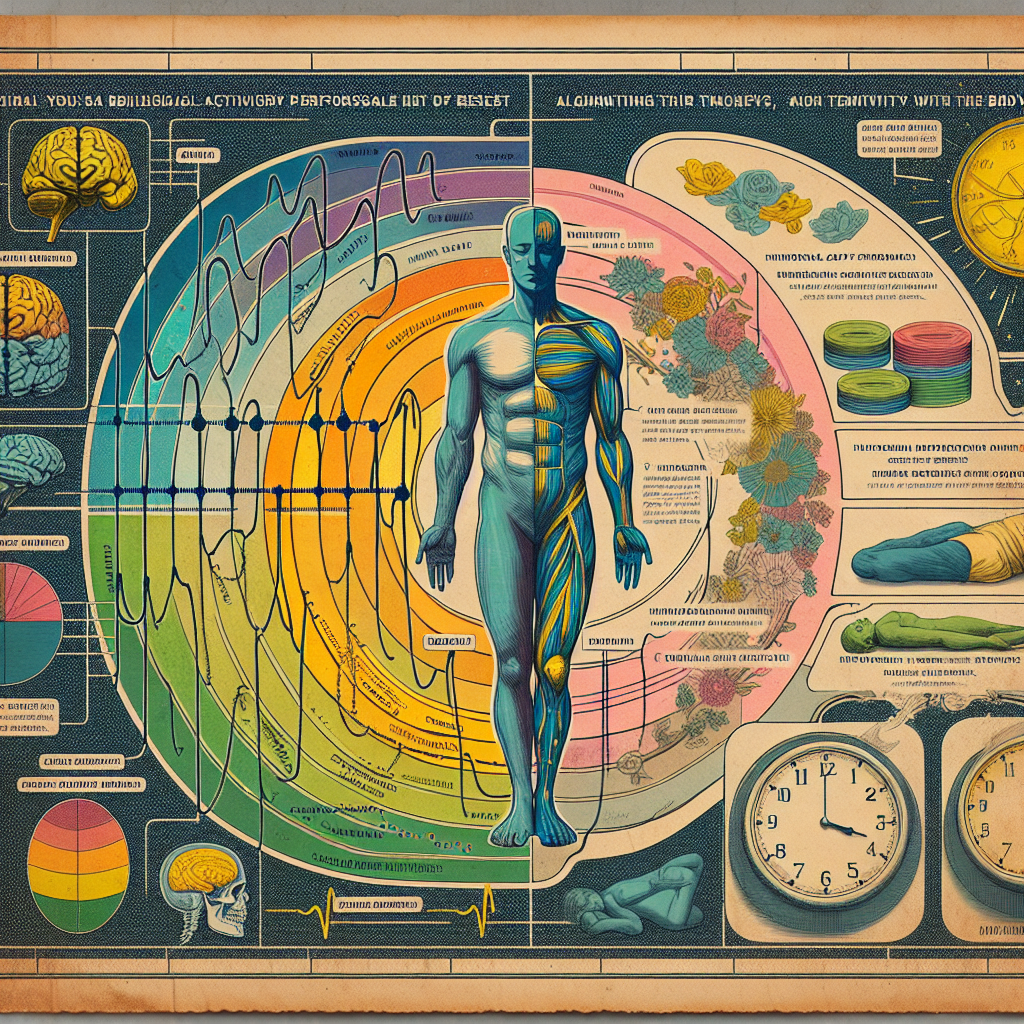Biorhythms: How to Work With Your Body Clock, Not Against It

Discover the secret to working in harmony with your body clock! Learn more about biorhythms and how to optimize your daily routine for maximum productivity and health. Don’t fight against your natural rhythms – embrace them for a more vibrant and vital life. Click here to start your journey towards a healthier lifestyle today!
Maximizing Productivity: Understanding and Working with Your Biorhythms
Biorhythms, or the natural cycles that govern our bodies, play a significant role in determining our levels of alertness, energy, mood, and overall productivity. Understanding and working with these rhythms, rather than against them, can significantly enhance our ability to perform tasks efficiently and effectively.
Our bodies operate on a 24-hour cycle known as the circadian rhythm. This rhythm influences our sleep-wake cycle, hormone release, digestion, and other bodily functions. It is primarily driven by environmental cues, such as light and temperature. When we align our activities with our circadian rhythm, we can optimize our productivity and overall well-being.
One of the most critical aspects of our circadian rhythm is the sleep-wake cycle. Research has shown that a consistent sleep schedule, aligned with our natural circadian rhythm, can significantly improve our cognitive function, mood, and energy levels. For instance, most people experience a natural dip in energy in the mid-afternoon, often referred to as the “afternoon slump.” Recognizing this natural rhythm and scheduling rest or low-intensity tasks during this time can help maintain productivity throughout the day.
In addition to the circadian rhythm, our bodies also operate on an ultradian rhythm, which cycles every 90 to 120 minutes. This rhythm influences our attention span, alertness, and mental energy. Studies have shown that we can maximize our productivity by working in sync with our ultradian rhythm. This means working intensively for 90 to 120 minutes, followed by a short break to rest and recharge. This approach, often referred to as the “Pomodoro Technique,” can significantly enhance our focus and productivity.
Our biorhythms also influence our eating habits and digestion. Our bodies are naturally programmed to digest food most efficiently during the day, while our metabolism slows down at night. Aligning our eating schedule with this rhythm can help optimize digestion, energy levels, and overall health. For instance, having a hearty breakfast and lunch, followed by a lighter dinner, can help maintain steady energy levels throughout the day.
Moreover, our biorhythms can also affect our exercise performance. Research has shown that our bodies are most prepared for physical activity in the late afternoon or early evening, when our body temperature is at its highest. Scheduling workouts during this time can enhance performance, recovery, and the overall benefits of exercise.
In conclusion, understanding and working with our biorhythms can significantly enhance our productivity and overall well-being. By aligning our activities with our natural rhythms, we can optimize our cognitive function, energy levels, digestion, and exercise performance. However, it’s important to remember that everyone’s biorhythms are unique, and what works best for one person may not work for another. Therefore, it’s crucial to listen to our bodies and adjust our schedules accordingly. By doing so, we can work with our body clock, not against it, and maximize our productivity and health.
Harnessing Your Body Clock: A Comprehensive Guide to Biorhythms

Biorhythms, or body clocks, are the natural cycles our bodies follow over a 24-hour period. These cycles regulate everything from our sleep patterns to our hunger cues, and even our cognitive abilities. Understanding and harnessing your body clock can lead to improved health, productivity, and overall well-being.
Our body clocks are primarily influenced by two factors: light and time. The presence or absence of light signals to our bodies whether it’s time to be awake or asleep. Similarly, the time of day can affect our energy levels, mood, and cognitive function. For instance, most people experience a natural dip in energy in the mid-afternoon, often referred to as the “afternoon slump.”
The concept of biorhythms suggests that by aligning our daily activities with these natural cycles, we can optimize our performance and well-being. For example, if you’re a morning person, you might find that you’re most productive in the early hours of the day. Conversely, if you’re a night owl, your peak productivity might come in the evening. By scheduling your most demanding tasks during your peak productivity hours, you can work with your body clock, not against it.
However, it’s not just about productivity. Our body clocks also play a significant role in our physical health. Disruptions to our body clock, such as those caused by shift work or jet lag, can lead to a range of health problems, including sleep disorders, obesity, and even certain types of cancer. Therefore, maintaining a regular sleep-wake cycle is crucial for our overall health.
So, how can you harness your body clock for optimal health and productivity? The first step is to understand your own biorhythms. Pay attention to your energy levels, mood, and cognitive function throughout the day. Do you tend to feel energetic in the morning, afternoon, or evening? When do you usually feel tired or sluggish? These observations can give you valuable insights into your own body clock.
Once you’ve identified your natural rhythms, you can start to align your daily activities with them. If you’re a morning person, try to schedule your most challenging tasks for the early part of the day. If you’re a night owl, save these tasks for the evening.
In addition to aligning your activities with your body clock, it’s also important to maintain a regular sleep-wake cycle. Try to go to bed and wake up at the same time every day, even on weekends. This can help to regulate your body clock and improve your sleep quality.
Finally, remember that light plays a crucial role in regulating our body clocks. Try to get plenty of natural light during the day, and limit your exposure to artificial light in the evening. This can help to signal to your body when it’s time to be awake and when it’s time to sleep.
In conclusion, understanding and harnessing your body clock can lead to significant improvements in your health, productivity, and overall well-being. By paying attention to your natural rhythms and aligning your daily activities with them, you can work with your body clock, not against it.
Biorhythms: The Key to Health and Efficiency in Daily Life
Biorhythms, or biological rhythms, are the natural cycles our bodies follow over a 24-hour period. These cycles regulate our sleep, eating habits, hormone production, and even our mood. Understanding and working with these rhythms, rather than against them, can significantly enhance our health, productivity, and overall quality of life.
Our bodies are essentially biological clocks, with various systems operating on different schedules. The most well-known of these is the circadian rhythm, which governs our sleep-wake cycle. This rhythm is influenced by external cues such as light and temperature, but it also has an internal component that keeps us on a roughly 24-hour schedule. When we align our activities with our circadian rhythm, we can optimize our energy levels and cognitive function. For instance, most people experience a peak in alertness in the late morning, making this an ideal time for tasks that require focus and concentration.
Another important biorhythm is the ultradian rhythm, which operates on a shorter cycle of about 90-120 minutes. This rhythm governs periods of high and low energy throughout the day. By taking breaks in alignment with our ultradian rhythm, we can prevent burnout and maintain a steady level of productivity. For example, after about 90 minutes of focused work, it can be beneficial to take a short break to rest and recharge.
Our bodies also follow a hormonal rhythm, with different hormones being released at different times of the day. Cortisol, the stress hormone, is typically highest in the morning, helping us wake up and start our day. On the other hand, melatonin, the sleep hormone, is released in the evening, signaling to our bodies that it’s time to wind down and prepare for sleep. By understanding these hormonal rhythms, we can better manage our stress and sleep patterns.
Working with our biorhythms rather than against them requires a certain level of self-awareness. It involves paying attention to our bodies’ signals and adjusting our schedules accordingly. This might mean going to bed earlier to align with our natural sleep-wake cycle, or scheduling important tasks for times when we’re naturally more alert. It might also involve adjusting our eating habits to align with our metabolic rhythms, which can help with weight management and overall health.
However, it’s important to note that everyone’s biorhythms are slightly different. What works for one person might not work for another. Therefore, it’s crucial to experiment and find what works best for you. This might involve tracking your energy levels throughout the day, or keeping a sleep diary to identify patterns in your sleep-wake cycle.
In conclusion, understanding and working with our biorhythms can significantly enhance our health and productivity. By aligning our activities with our natural cycles, we can optimize our energy levels, manage our stress, and improve our overall quality of life. It’s a simple yet powerful way to work with our bodies, rather than against them. So, why not give it a try? Start paying attention to your body’s signals, adjust your schedule accordingly, and see the difference it can make in your daily life.